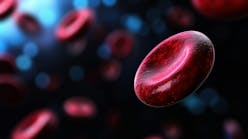AABB comments on the FDA’s draft guidance on considerations for early phase clinical trials for cellular therapy products
The field of cellular therapies is a rapidly growing industry, and more products are gaining regulatory approval from competent authorities worldwide. In the United States, the cellular therapies field is a quickly maturing practice that plays an important role in the field of regenerative medicine. Although the scientific advancements in this field are outpacing the regulatory landscape for these products, the Food and Drug Administration has, for the first time, published a draft guidance document to help applicants usher these types of products from the preclinical development stages to phase 1 and 2 clinical trials in humans.
The draft guidance, titled “Considerations for the Design of Early-Phase Clinical Trials of Cellular and Gene Therapy Products,” when finalized, will serve as an invaluable resource to investigators. It will clarify the current expectations of the Office of Cell, Tissue, and Gene Therapy at the FDA’s Center for Biologics Evaluation and Review regarding clinical trials in which the primary objectives are the initial assessments of safety, tolerability, or feasibility of administration of investigational products.
As with most FDA guidance documents, the availability is announced in the Federal Register, which creates an open docket. In the Federal Register notice, the FDA includes information such as background on the document, timelines, and submission processes for documents on which the FDA is seeking input from the public. Once the public comment period has closed, the FDA reviews the remarks and may suggest revisions based on the comments received before publishing the final version of the guidance document.
The draft guidance applies to certain cell and gene therapy products that are regulated as “biological products” under section 351 of the Public Health Service Act. Specifically, this draft guidance outlines points that investigators should consider when planning, preparing, and designing phase 1 and 2 clinical trials. It discusses the differences to consider for various study populations, overall design of the study (single arm, crossover, etc.), blinding, comparator and placebo controls, and primary and secondary endpoint selection. However, it doesn’t provide recommendations for the design of preclinical studies and CMC information; these topics are addressed in separate guidance documents.
The AABB collects feedback from its members, and, in this case, feedback was collected from members with cellular therapy expertise, namely those actively involved in the development, planning, and execution of clinical trials. Comments are intended to be representative of the goals and mission of the organization, and have the intent of influencing the guidance document before it is finalized by the FDA. The comments submitted to the FDA range from clarifications for administrative items to suggestions for new content or expansion of acceptable recommendations.
In the introduction of the draft guidance document, the scope was not well defined. As many cellular therapy products are being co-developed with other novel therapies, it was requested that the FDA describe how the guidance will apply to combination products. Additionally, as this guidance is limited to products regulated by CBER’s Office of Cell, Tissue, and Gene Therapy, it is important for it to be explicitly stated that therapeutic vaccines are covered by this guidance.
The draft guidance lists and describes considerations for specific study populations including healthy volunteers, disease stage or severity, lack of other treatment options, and pediatric subjects (Section IV.B). The guidance should be as inclusive as possible. Therefore, it was suggested that the FDA include a subsection for geriatric subjects. Geriatric subjects often have co-morbidities and concomitant therapies that may interact with investigational cellular therapy products. These age-related issues may not be observed or extrapolated from the adult population. As demographics continue to change, the geriatric population will continue to grow and will play an ongoing important role in medicine.
To help reduce the burden for academic centers and organizations that receive federal grants, it was suggested that the FDA remove the recommendation that sponsors have two separate protocols —one for safety or efficacy and another for long-term monitoring (Section IV.F.3). The FDA states that long-term follow-up is often necessary for the trial to have an acceptable balance of risks and benefits. However, there are logistical challenges with keeping a clinical trial database open, especially if the clinical development of the cellular therapy products will progress to phase 2 and 3 trials. On this basis, it was suggested that this recommendation be removed from the guidance document.
In Section IV.F.4, the FDA discusses concepts for stopping rules that would typically result in temporary suspension of enrollment or administration of the cellular therapy product until it can be further assessed. Typically, the number or frequency of serious adverse events or unexpected deaths is used as a stopping rule. However, the inclusion of additional examples of stopping rules would be greatly beneficial to sponsors in the development of well-designed clinical trials for cellular therapy products. It would also help to reduce the burden of amending protocols after they have been submitted to an IND.
While the FDA cannot specify exact dates for the final publication of the guidance, it is anticipated that it will be finalized and published by 2015. Clinical trials of investigational cellular and gene therapy products are in active space; currently more than 24,000 cellular therapy and more than 3,000 gene therapy clinical trials are listed on the U.S. registry at clinicaltrials.gov. This guidance document will help shape the investigational landscape of clinical trials in the U.S. and globally by providing insight on what factors the FDA deems most important to the development of safe and effective cellular therapy products.
Rafael K. Cassata, MS, RAC (US, EU), serves as deputy director of regulatory affairs at AABB Center for Cellular Therapies. He is responsible for advocating and shaping regulations for HCT/Ps and biological products.
Resources:
- Draft guidance for industry: Considerations for early phase clinical trials for cellular therapy products. http://www.fda.gov/downloads/Biologi…/UCM359073.pdf. Accessed August 28, 2014.
- AABB comments to draft guidance for industry: Considerations for early phase clinical trials for cellular therapy products. http://www.aabb.org/advocacy/comments/Pages/commentsfda140508.aspx. Accessed August 28, 2014.





